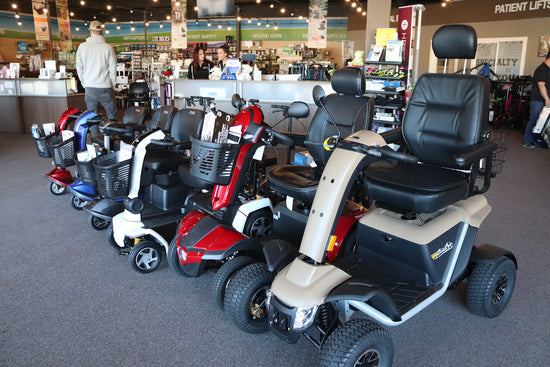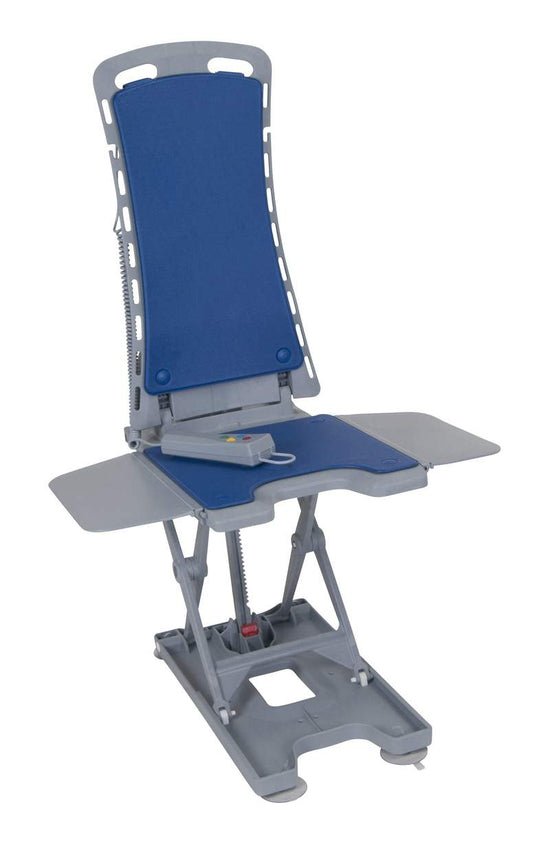Finding the right mobility aid is about more than just addressing your current needs; it’s about being prepared for the future. Whether recovering from an injury, managing a medical condition, or adapting to age-related changes, your mobility aid should be a dependable companion that evolves with you.
Selecting one that offers versatility and adaptability can save you time, money, and frustration down the road. Key factors such as durability, adjustability, and comfort play essential roles in making the best choice. Understanding what to look for ensures you invest in a solution that grows alongside your changing requirements.
Understanding Your Current and Future Mobility Needs
Selecting the right mobility aid begins with a clear understanding of both your current situation and how it may evolve over time. Start by assessing your present mobility challenges—whether it’s difficulty with balance, limited strength, or reduced endurance. Consider how these challenges impact your daily activities, such as walking, climbing stairs, or standing for extended periods.
Equally important is anticipating future changes. For example, a temporary injury may require short-term support like crutches, while chronic conditions such as arthritis or progressive illnesses like multiple sclerosis may call for solutions that offer greater versatility, such as rollators or wheelchairs. Mobility aids like adjustable canes, four-wheeled walkers, and motorized scooters are designed to adapt to various needs, ensuring long-term usability.
Factors like age, lifestyle adjustments, and potential medical advancements should also inform your decision. A lightweight walker with foldability may suit someone who frequently travels, while high-tech, powered wheelchairs might benefit users with complex mobility limitations.
By prioritizing both current functionality and long-term adaptability, you can find a mobility aid that not only fits your needs today but remains a reliable, supportive tool as your circumstances change. Always consult healthcare professionals for tailored guidance based on your unique requirements.
Types of Mobility Aids and Their Features
Mobility aids come in various forms, each designed to meet different needs, offering support, stability, and independence. Canes are simple, lightweight tools ideal for minor balance issues or reducing weight-bearing on a leg. Options include single-point canes for basic support and quad canes for enhanced stability. Crutches, on the other hand, transfer weight from the legs to the upper body, making them suitable for temporary injuries or long-term conditions. Variants like underarm and forearm crutches cater to different levels of support and comfort.
Walkers provide greater stability and are available in models such as standard walkers for indoor use and rollators with four wheels, seats, and hand brakes for enhanced mobility outdoors. For users requiring seated mobility, wheelchairs offer manual or powered options. Manual wheelchairs are budget-friendly and lightweight, while power wheelchairs provide advanced features like joystick control for individuals with limited upper-body strength.
Mobility scooters, similar to powered wheelchairs, are best suited for covering longer distances. They range from compact travel models to stable, four-wheel designs for rugged terrain. Each type of aid addresses specific challenges, ensuring that individuals can find the right tool to match their mobility needs. Always consult healthcare experts to identify the most suitable option for your condition.
The Importance of Durability
Durability is a key consideration when selecting a mobility aid that evolves with your changing needs. High-quality, durable devices reduce the likelihood of frequent repairs or replacements, ensuring longevity and reliability. Mobility aids, such as wheelchairs, walkers, and scooters, are daily-use tools that endure significant wear and tear. Opting for sturdy materials like aluminum or titanium not only provides strength but also keeps the device lightweight for easier handling.
Durable mobility aids offer better safety, as they are built to meet rigorous standards, minimizing risks of malfunctions that could lead to accidents. For instance, robust wheels and puncture-resistant tires on wheelchairs or scooters ensure smooth operation across various terrains without compromising stability. Maintenance also plays an essential role; regular inspections, such as tightening bolts or lubricating moving parts, significantly extend the lifespan of your mobility device.
Investing in a durable mobility aid can be cost-effective in the long run. Though the initial expense may seem higher, reliable products typically come with extended warranties and require fewer repairs, saving money over time. By prioritizing durability, you’ll secure an aid that not only meets your current needs but adapts and performs efficiently as your requirements evolve. Always consult experts for guidance in selecting the most durable option.
Adjustability for Long-Term Use
When selecting a mobility aid, adjustability is a critical feature that enhances both immediate usability and long-term value. Adjustable devices can adapt to your evolving needs, ensuring sustained comfort and effectiveness as mobility requirements change over time. For instance, height-adjustable canes, walkers, and crutches improve posture and alignment, reducing strain on muscles and joints, and minimizing the risk of discomfort or injury.
Properly adjusted mobility aids also enhance safety by ensuring a personalized fit. Devices that are too high or low can compromise balance or stability, increasing the chances of falls or accidents. Adjustable wheelchairs or rollators with customizable handlebars, seat heights, or variable speed support allow users to maintain optimal posture and ergonomics, accommodating unique body dimensions and activity levels.
Additionally, mobility aids with adjustable components are more efficient and versatile. For example, a rollator with adjustable brake tensions can cater to individuals with varying hand strengths, while wheelchairs with customizable back supports adapt to changing health conditions. This adaptability not only extends the lifespan of the device but also reduces the need for frequent upgrades, providing a cost-effective solution.
By prioritizing adjustability, you create a foundation for enhanced independence and comfort, making it easier to meet current needs while preparing for future changes. Always consult a professional for proper device fitting and adjustments.
Comfort and Ergonomics
When it comes to mobility aids, comfort and ergonomics play a vital role in ensuring the user's well-being and satisfaction. A well-designed mobility aid can significantly reduce strain on joints and muscles, making everyday tasks easier and more comfortable. Features like cushioned seats, padded armrests, and breathable materials help prevent discomfort during extended use, particularly for wheelchairs and scooters.
Ergonomic design not only enhances comfort but also promotes better posture and reduces the risk of long-term issues, such as back pain or pressure sores. Adjustable components, like handle heights on walkers or customizable footrests on wheelchairs, cater to users' unique body dimensions, ensuring a perfect fit. This level of personalization boosts ease of use and confidence, as the aid feels tailored to individual needs.
For those seeking mobility aids designed with user comfort in mind, adjustable rollators with built-in seats or wheelchairs with tilt-in-space features are excellent options. Ensuring comfort isn’t just a luxury—it’s a necessity for maintaining independence and quality of life.
To explore high-quality and ergonomic mobility solutions, visit Everything Medical. Their extensive range of customizable and comfortable mobility aids ensures you’ll find the perfect fit for your needs.




